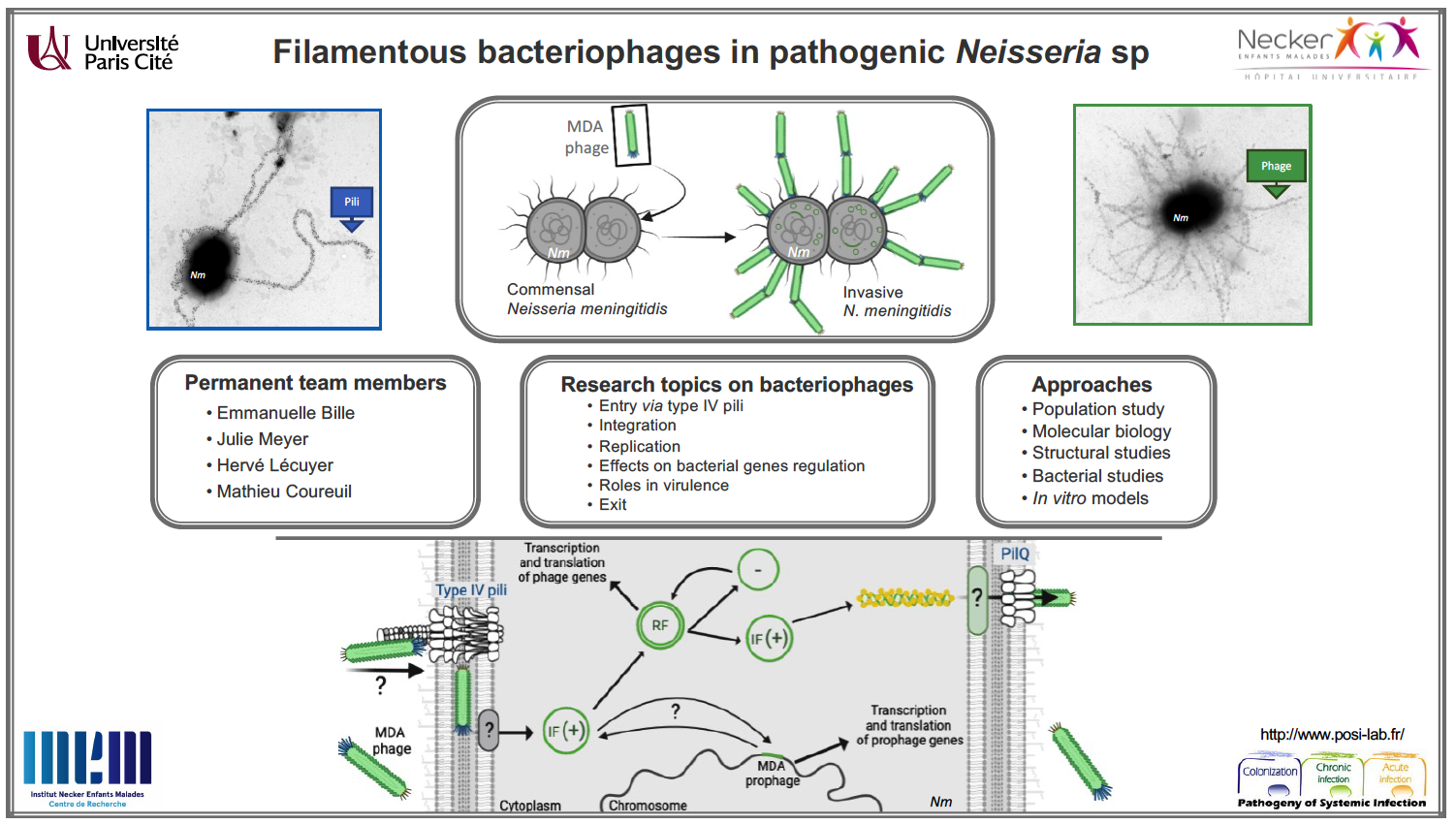Pathogeny of systemic infection (U1151, Paris)

Emmanuelle Bille (courriel), Institut Necker-Enfants malades, U1151, Paris
Composition de l'équipe : 6 personnes dont 4 permanents
Sujet principal : Neisseria meningitidis is a common resident of the human nasopharynx, but it sometimes causes devastating sepsis and meningitis. It is still not known how and why some strains have an invasive phenotype instead of being harmless commensals. A filamentous phage called MDAΦ is over-represented in the genome of invasive N. meningitidis strains compared to commensal isolates from healthy carriers. Similarly, a filamentous phage close to MDA is present in all strains of Neisseria gonorrhoeae, an obligate pathogen causing sexually transmitted diseases. In contrast, non-pathogenic Neisseria sp are rarely associated with phages. Temperate filamentous phages are increasingly recognized as key players in bacterial virulence. We aim to decipher the contribution of filamentous phages in Neisseria pathogenesis, using MDA as a model. We would like to reveal new key mechanisms of meningococcal infection. This will also lay the foundation for further research on the contribution of filamentous phages in the pathogenesis of N. gonorrhoeae or other bacterial infections.
Mots-clés : filamentous bacteriophage, virulence, meningococcus, gonococcus, Neisseria
Interactions
| Nom de l'espèce bactérienne cible | Nom du/des bactériophage(s) |
| Neisseria meningitidis | MDA |
| Neisseria gonorrhoeae | Nf4 |